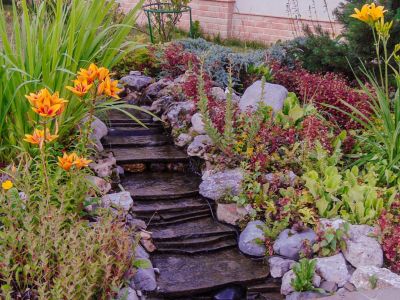In the case of a hill or steep slope, a rain garden may not be the ideal solution. However, it is possible to have a rain garden on a hill.
Sloped Rain Garden Alternatives
For a rain garden, the slope from the highest to the lowest point in the desired area should not measure more than 12 percent. If it is higher, as in the case of a hill, digging into the side of the hill may compromise its stability, making erosion more of a problem. Instead, the hillside can be terraced into smaller rain garden pockets to preserve the integrity of the hillside. Low-maintenance shrubs and trees can be planted on the slope as well. Other options exist for rainscaping if the hill is too steep for a conventional rain garden. If the job seems too overwhelming, it might be wise to call in a professional. Below are some tips for managing stormwater runoff down a steep hill:
Plant low-maintenance trees, shrubs, and perennials along the slope to slow down the runoff and reduce erosion. The plantings will also stabilize the hill and increase wildlife habitats. Biodegradable erosion control netting can be added when planting to prevent any bare spots along the slope.
Bioswales, or linear channels, can deflect water coming from a direct source like a downspout. Rock weirs, or piles of stones intentionally placed to slow down runoff, can help prevent erosion on a hill. Likewise, using stones to create an alpine slide garden with a water feature is a good way to have a rain garden on a slope.
Terraced, small rain garden pockets can capture and retain runoff to prevent soil erosion. When space is at a premium, create a straight line of cells. With larger areas, a serpentine design is more appealing. Use native plants and grasses to enhance your rainscape.
